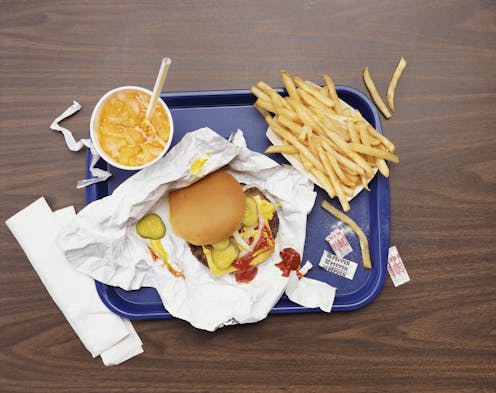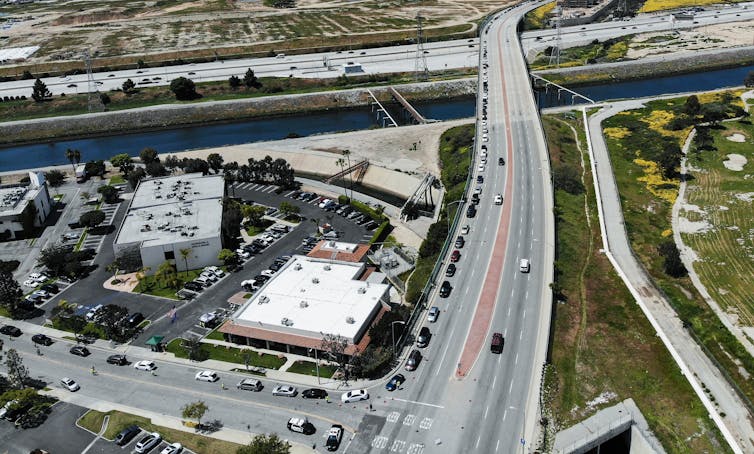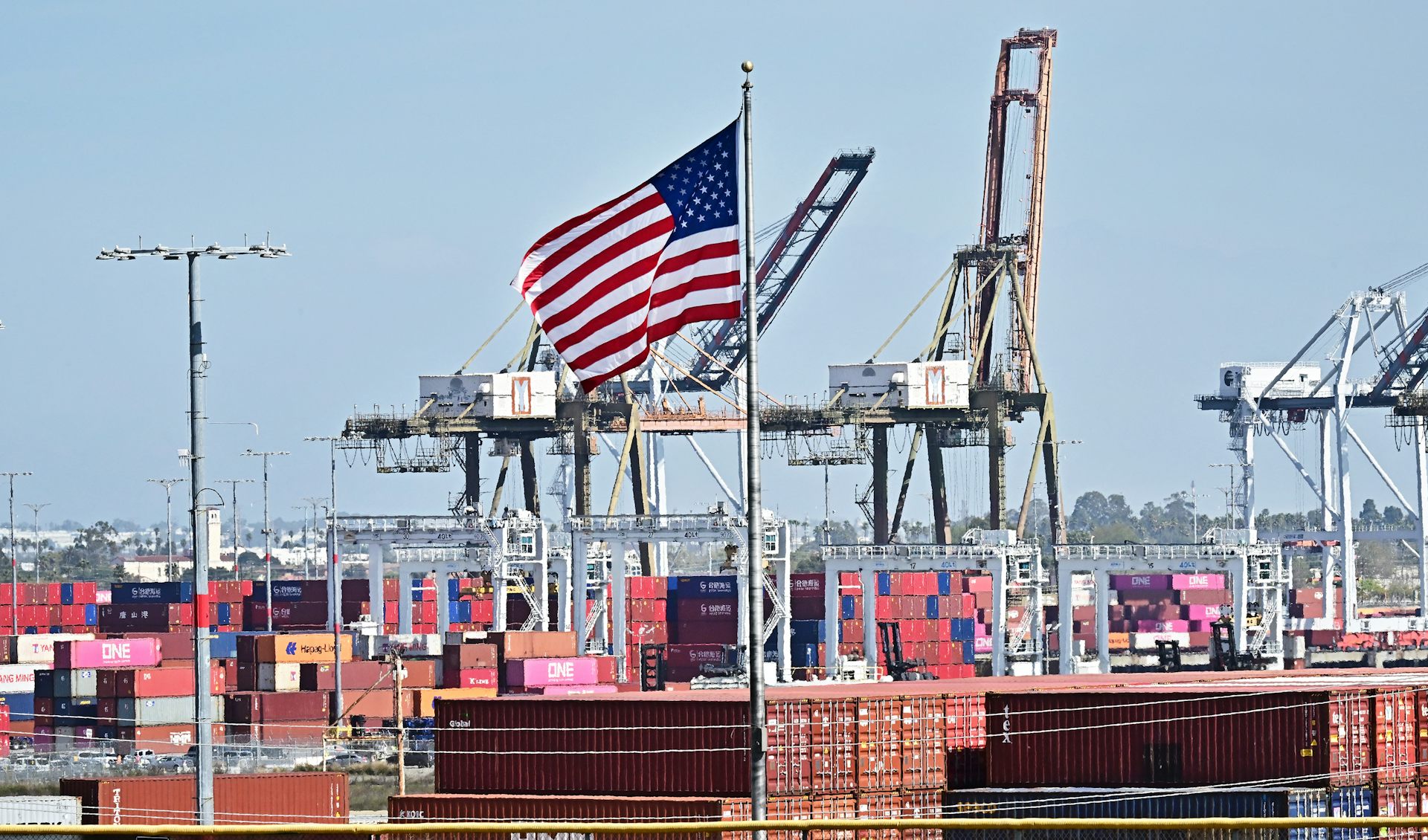Fast food is comforting, but in low-income areas it crowds out fresher options
Fast-food restaurants can be comforting places, but when they saturate communities, they crowd out healthy food sources and leave residents less nourished.

Many Americans take comfort in the routine of jumping into the car and grabbing a burger. They choose restaurants with familiar faces behind the counter. They even yearn for a favorite “greasy spoon” diner while having to cook for themselves at home during COVID-19.
People feel emotionally attached to food and the routines associated with it. These rituals provide a sense of comfort and belonging – even if the meal is from a fast-food restaurant and they stood in line for it.
I study food security in California’s Central Valley, which is, ironically, one of the most productive agricultural areas in the world. Food security means maintaining reliable, consistent access to food. It requires time and resources that are often scarce in food-insecure households.
Many people in the food-rich Central Valley experience a high degree of food insecurity. They rely more heavily on fast and prepared foods for sustenance and comfort than the general population.
The powerful relationship between people’s attachment to fast-food restaurants and their inability to get fresh food creates a downward spiral. Corporate fast-food chains undermine food security by weakening local control over food production. In turn, diminished local control over food production perpetuates food insecurity. Now, when COVID-19 has changed routines so much, I see an opportunity to break the cycle.

Fast-food restaurants as ‘third places’
People develop strong emotional bonds to places that they return to again and again. My research shows that these bonds can extend to gardening, agriculture and food preparation, like cooking or hunting.
People also form bonds with restaurants they frequent. Restaurants can function as “third places,” a term coined by sociologist Ray Oldenburg that describes safe spaces for conversation and community. Community gardens and cultural centers are often third places. Oldenburg built this idea off of “first places” and “second places” to describe where people find comfort or familiarity outside home or work.
Fast-food restaurants can also serve as third places. Older adults frequently socialize and relax there. Ambiance in restaurants has expanded beyond fast and convenient to homey and welcoming, providing amenities like complementary WiFi for those who wish to linger. The Starbucks barista who knows your name keeps many people coming back for single-shot espressos or group meetups.
Fast food is a staple for the food-insecure
Food-insecure families report facing challenges purchasing fresh fruits and vegetables, including high costs relative to their household budgets. Lack of time and resources for meal preparation also contribute to food insecurity, along with racial segregation and poverty.
For all of these reasons, many low-income and food-insecure households rely on fast-food restaurants. Fast food offers perceived value to consumers who can get a lot of food for the price, though it may be more expensive than fresh food.
Worldwide, single-parent households are more likely to experience food insecurity. Single parents are also likely to work multiple jobs and have time constraints on home meal preparation. Students, the disabled and the elderly often lack physical space and storage space for home meal preparation, and resort to fast food and pre-prepared meals.
Food insecurity in California’s Central Valley
In fall 2019 and spring 2020, graduate research assistants and I surveyed undergraduate students at the University of California-Merced about food security and food-restaurant attachment. Many U.S. undergraduate students are consistently food insecure for a number of reasons, including resource and time constraints.
Our students are a resilient bunch: 73.2% are first generation college students, 63.8% are Pell Grant recipients from low-income households, and more than 90% self-describe as non-white. Ironically, many students come from families who harvest the food that feeds our nation. They often hold more than one job while attending classes full-time, in order to make ends meet.
In preliminary results from our survey, 25% of students said that at least once a week they go all day without eating because they are too busy. 20% report that at least weekly they can’t afford healthy or nutritious food. About 37% report lacking access to healthy food even when they know about supplemental food resources such as CalFresh.
Not surprisingly, 80% of respondents make their food decisions based upon price. However, 75% of students base their choices on convenience and access to food. Nearly 70% report selecting food for familiarity, comfort, or importance to culture, identity or lifestyle. More than 60% stated that they eat at their favorite restaurant – often a fast-food establishment – because it’s comforting.
Crowding out local control
Fast-food restaurants aren’t only problematic because of their calorie-rich menus. They are heavily concentrated businesses. Ten companies own more than 50 of the biggest restaurant chains in the world. Many franchises have multiple owners, most of whom are unlikely to reside in the community. So local communities fail to control the food system.
Concentrated purchasing power controls how food is grown and traded across the world. A basic tenet of my discipline, agricultural economics, is that international trade can benefit all. But in fact, disproportionate corporate power over the food system has created “food deserts” where people can’t get healthy food.
Building new routines
Food and restaurants forge emotional bonds. It’s complicated. Fast-food habits have become a “normal part” of U.S. culture, and the most vulnerable populations often lack time and resources to break this routine.
Rather than criticize such decisions, I believe society can build new food pathways. For example, in response to COVID-19 some communities are connecting charities with restaurants to cook and deliver meals to the food insecure. In California, CropMobster Exchange matches locally grown food with those who need it.
After being home bound, home cooked meals can become a habit once again. Americans are reportedly becoming more confident in their cooking and eating more healthy foods as a result of pandemic stay-at-home directives. There is also renewed awareness of the food safety benefits of cooking at home, and the value of maintaining a local food supply.
These insights open the door for communities to better control how food is produced, processed and prepared. Many Americans have started COVID-19 victory gardens. In some places, community freezers and pantries offer an easy way to donate food directly to people who need it.
In my community, where fruit trees are abundant, you can donate your surplus produce to the Merced County Food Bank or volunteer for its gleaning program Picking for a Purpose. More creative thinking like this can help create new bonds and routines that make it easier for communities to feed themselves.
[Deep knowledge, daily. Sign up for The Conversation’s newsletter.]
Catherine Keske received funding from two funding sources tied to this research, the Blum Center (2018-2019) and the Regents of the University of California.
Read These Next
AI-generated political videos are more about memes and money than persuading and deceiving
Don’t discount the threat of AI political videos fooling people, but for now, they’re mostly about…
Polytechnic universities focus on practical, career-oriented skills, offering an alternative to trad
Polytechnic universities try to incorporate skills-based learning into education.
Time banks could ease the burden of elder care and promote connection
A diverse team of researchers, concerned that the global elder care crisis cannot be addressed by the…





